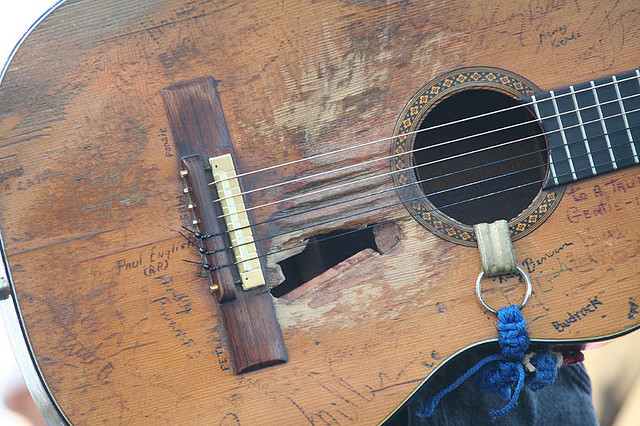That is a common misconception you have. It is the tension that matters most. The fluorocarbon has a higher density than nylon, so that is why they are thinner, but the tension is probably about the same. But as in my case and many others the thinner strings are frendlier. So it matters too.
That's not a misconception. You are entitled to your preferences as am I. After all our fingers and play times are different and we don't feel things the same. However, since you opened that can 'o worms, here's the tension data for two of D'Addario's normal tenor ukulele strings:
Tension Chart for EJ65TLG Pro-Arté Custom Extruded Ukulele, Tenor
Diameter Tension
Note Inches mm lbs kg
A 0.0285 0.0000 13.180 5.983
E 0.0327 0.0000 9.590 4.353
C 0.0410 0.0000 9.340 4.240
G 0.0290 0.0000 11.040 5.012
Tension Chart for EJ99TLG Pro-Arté Carbon Ukulele, Tenor
Diameter Tension
Note Inches mm lbs kg
A 0.2050 0.0000 12.300 5.584
E 0.2600 0.0000 11.110 5.043
C 0.3190 0.0000 10.530 4.780
G 0.0224 0.0000 11.660 5.293
As you can see, we're both partially wrong or partially right! The 1st string of the "fat" nylon set is indeed about .8 LB higher tension than the fluorocarbon. However, the 2nd the 3rd strings of the fluorocarbon are both over 1 LB higher tension. The 4th string of the fluorocarbon set is just barely higher tension. Actually the difference in ukulele tensions doesn't bother me much in the above case. I admit, for the ukulele they're close enough it's no biggie. Of course, there are tenor sets that start at .024" with fluorocarbon sets and I feel the pain with those.
However, my experience with the D'Addario classical guitar fluorocarbons is the first string (.024") of normal tension sets bite into my fingers tips like angry bees and I much prefer the fatter .028" nylon string for comfort. In the case of the normal tension classical guitar fluorocarbons, the 1st string tension is considerably higher than the Pro Arte nylon version: 21.290LB vs 16.230LB for the .028" nylon. And, yes, this is comparing their normal tension sets. This mainly my point of reference since I spend the most time on classical guitars.
I figure the distribution of the string tension across a slightly larger area of the finger decreases the nerve irritation. It may not seem like a big deal for short practices but because of my job I easily spend upwards of 4 hours daily playing my guitar and ukuleles. And the fingertip pain has me always setting up the action a little lower than optimal and gravitating towards lighter strings after a 40 year career.

